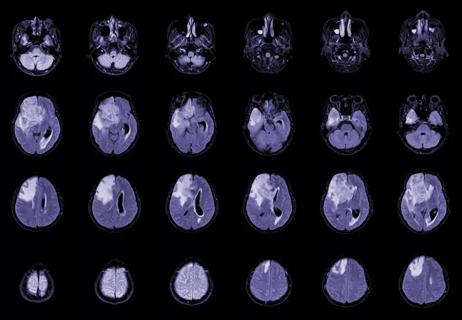Highlights from the 2014 Medical Innovation Summit

More than 50 percent of all cancer patients will undergo radiation at some point, often in combination with surgery or chemotherapy. While the advent of radiation therapy has meant improved survival for many, it like many treatment modalities is not without its drawbacks.
Cleveland Clinic is a non-profit academic medical center. Advertising on our site helps support our mission. We do not endorse non-Cleveland Clinic products or services. Policy
In light of this, one panel at the 2014 Medical Innovation Summit, entitled “Radiation Therapy: The Role of Photons, Protons, and Particles,” will assess the current state of radiation oncology and elucidate the ways in which modern technology and approaches to medicine are helping to make this conventional treatment anything but.
“Although radiation oncology has had many advances in the last decade, we need to better understand the biology of tumors and evolving data to maximize outcomes of radiation to better the lives of cancer patients,” notes John Suh, MD, Chairman of the Department of Radiation Oncology at Cleveland Clinic and session speaker.
Dr. Suh, along with presenters Dow R. Wilson, CEO and president of Varian Medical Systems; Thomas Puusepp, executive director of Board of Elekta; and Chris Raanes, president and CEO of ViewRay, will break down the latest advances in radiation oncology in the following key areas:
• Integration of imaging
Image-guided therapy couples cone beam computed tomography or magnetic resonance imaging with traditional radiation therapy delivery techniques to better account for tumor movement (particularly in the lung) during treatment, thereby providing increased delivery accuracy. For example, the ViewRay MRI System allows clinicians to track tumors in real time and determine with greater precision the radiation dose delivered to the tumor.
• Faster and more accurate targeting
Radiation therapy provides better organ preservation than surgery. And, since it is directed (localized) therapy rather than systemic therapy, radiation can better target tumors thereby minimizing side effects compared to some forms of chemotherapy. However, because the tolerance to radiation varies among patients and various tissue types, non-cancerous areas of the body still can be negatively affected. As a result, patients may experience various side effects such as xerostomia.
By utilizing high speed computers with volumetric modulated arc therapy, radiation oncologists can improve efficiency and drastically reduce treatment times, sometimes to as little as 5 minutes. For instance, Varian’s Edge™ Radiosurgery System uses a robotic table top that decreases a patient’s treatment time by about 40 percent. Similarly, Elekta’s linear accelerators include customized beams that can improve accuracy, reduce exposure to nearby healthy tissue and organs, and decrease treatment time. Decreased treatment times reduce the potential for patient and tumor motion, which could result in better outcomes in terms of patients’ physical and psychosocial functioning.
• Individualized approaches to care
One current drawback of radiation is its one-size-fits-all approach. Certain doses of radiation are typically administered for specific types of tumors, but the Cleveland Clinic is researching how a more personalized approach could tailor therapeutic interventions to individuals. Termed radiogenomics, this technique examines tumor tissue for specific markers or genes that could indicate better responsiveness to a particular type, dose or delivery method of radiation. In addition, the emphasis on informatics to analyze outcomes and drive quality and safety are also important to individualizing patient care.
“We want to individualize the therapy based on real time information about the patient to achieve the best outcomes while minimizing side effects,” explains Dr. Suh. “Ultimately, this means we will be better able to use radiation when appropriate and to avoid it when not indicated.”
Panel discussions also will cover the ways in which innovations are being applied at the Cleveland Clinic currently, particularly in terms of generating outcomes data to better understand their impact on clinical care. The use of “big data” is daunting but will ultimately help drive better outcomes.
“We have always been very committed to providing the latest technology for our cancer patients. The integration of imaging, biology, and outcomes data is a major area of focus,” says Dr. Suh. “Our commitment to patient-centric care allows us to leverage the technologies, research, and data to drive the best patient experience and value possible.”

Timing and type of side effects differ greatly from chemotherapy

Dedicated multidisciplinary teams support 84 ultra-rare cancers

Sessions explore treatment advances and multidisciplinary care

New research from Cleveland Clinic helps explain why these tumors are so refractory to treatment, and suggests new therapeutic avenues

Combination of olaparib and carboplatin results in complete durable response for a patient with BRCA2 and “BRCAness” mutations

Early communication between oncologists and ophthalmologist warranted

Case-based course delves into latest treatment approaches

Long-term relationship building and engagement key to gaining community trust